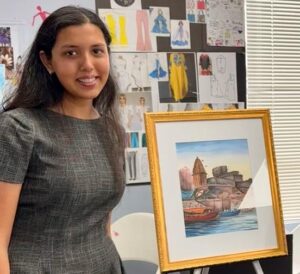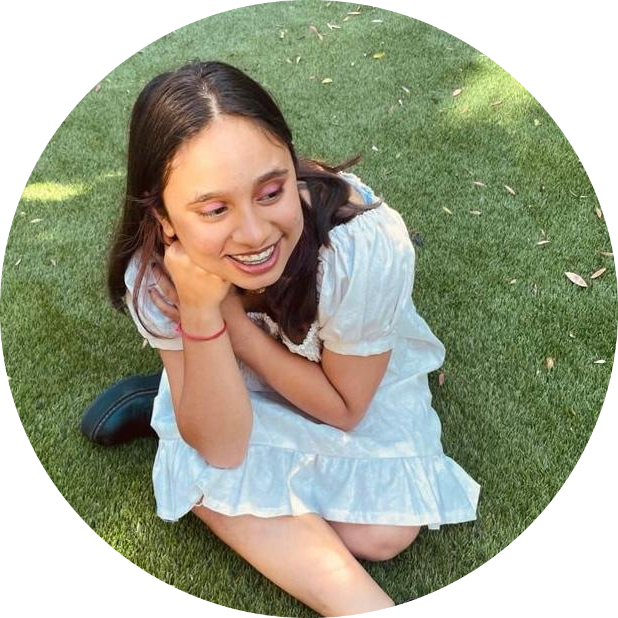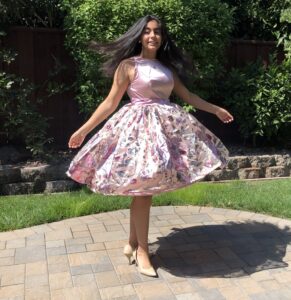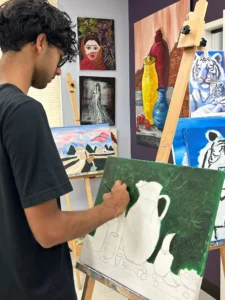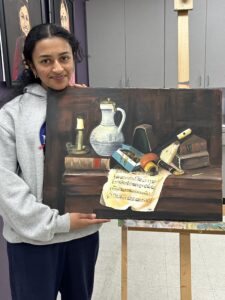The Story of an Albacore
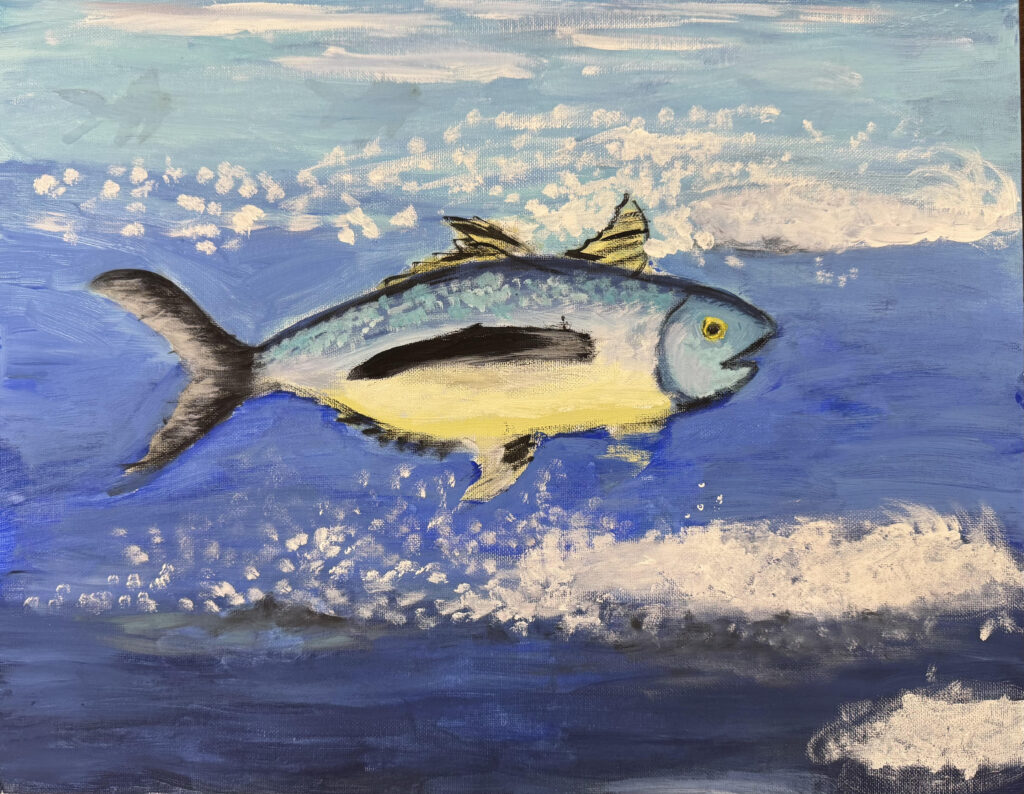
By- Gianna Joe Thoms Grade 2nd I made a painting of an albacore tuna swimming in my Kalaa Art & Design Studio. The fish is silver with a dark blue back. It has long fins that help it move fast through the water. I used different shades of blue to show how deep the ocean is. The top of the ocean is bright blue and the bottom is dark blue. Light shines through the waves, making the fish sparkle. The tuna looks smooth and shiny, like it is really swimming. Tiny bubbles float behind the tuna as it moves. In the background, there might be other sea creatures. Maybe there are little fish swimming nearby or a big shark far away. The water looks like it’s moving with soft waves. The painting shows how the ocean is full of life. The painting makes me feel like I am in the ocean swimming next to the fish. The colors are bright and pretty. The fish looks strong and free moving fast through the deep blue water. The ocean is big and full of amazing creatures. This painting shows how beautiful and special the albacore tuna is. It is a wonderful fish that belongs in the wild sea!
Truly magnificent; Tiger Rockfish
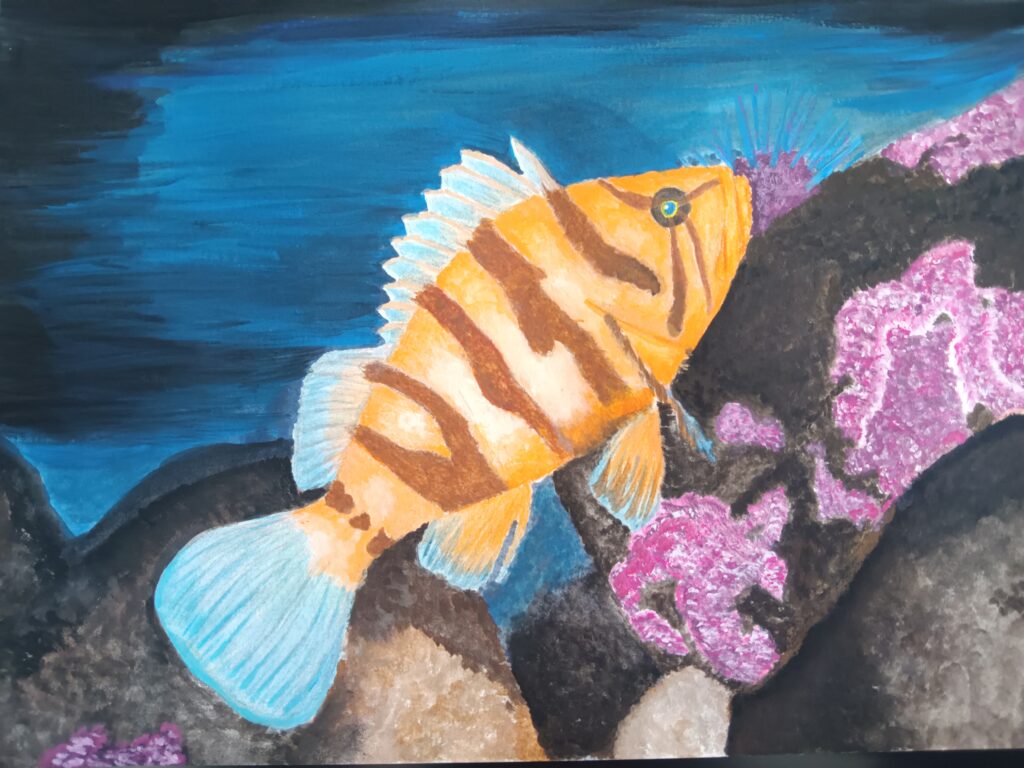
Rianna Shah Grade:8 The ocean is full of incredible creatures, but the tiger rockfish stands out as one of the most beautiful. The vibrant orange and brown stripes make the fish look fierce and elegant. Not only the fish but, its habitat is also just as beautiful, such as the vibrant and rocky reefs. In my artwork, I depicted this by portraying the dark rocks in the background of the fish, along with showing off the vibrant pink plantation around the fish. As I was selecting my artwork for this piece, I wanted a fish that was not only visually stunning but also unique, and the tiger rockfish was the perfect choice. I tried to capture its beauty by showing off the bold brown stripes and elegant orange body. This fish doesn’t blend into its surroundings as its vivid color scheme makes this fish stand out. The fins and spine on this fish, make the rockfish look truly majestic as it glides through the ocean floor. I love how the ocean is dark yet vibrant where this fish lives, and I displayed this stunning scene with a blend of black and blue paint. The Tiger Rockfish is truly magnificent, not just its beauty but also its gorgeous habitat in which it lives. This fish was truly an inspiration for me to paint, and through my art, I hope to capture the uniqueness of this exquisite fish. The world is full of beautiful creatures however, the tiger rockfish will always be one of the most beautiful. Inspiration : Ocean Light.com
The healing power of art

“The arts are a critical component of healthcare. Expressive art is a tool to explore, develop, and practice creativity as a means to wellness.” ~ Wellarts Association ART has the power to heal, inspire, provoke, challenge & offer hope. ART enhances individuals, society, and the environment. Decades of research have provided more than a sufficient amount of data to prove that arts education impacts everything from overall academic achievement to social and emotional development and so much more. Research has proven the arts develop neural systems that produce a broad spectrum of benefits ranging from fine motor skills to creativity and improved emotional balance Every time you engage in a new or complex activity, your brain creates new connections between brain cells. Your brain’s ability to grow connections and change throughout your lifetime is called brain plasticity or neuroplasticity. Creating art stimulates communication between various parts of the brain. And this is the mere reason why art is important in our daily lives. Art and design process makes life worthwhile. It may not be vital to fulfill our basic needs, but it does make life joyful.
Mumma Bear;Shading Techniques
By Saira Siraj, 7th Grade The first artwork (of the two that I will be talking about) that we did is a shading techniques page. Here we have 4 different ways to shade in a drawing, shading, scumbling, stippling, and hatching. I first made a 16by16 grid towards the bottom of the page. Then we drew two long rectangles, on the top of the page. In the first one, we made lines inside, making equal parts. Then we shaded the rectangle from lightest to darkest. Then below that, we made the same scale but as a gradient, this time with no partitions. In the 16by16 grid on the bottom half of the page, we made columns of different shapes, spheres, cubes, cylinders, and cones. We shaded each row with a different technique. Hatching, Scumbling, Stippling, and Shading. Scumbling was the easiest as it was like scribbling and Stippling took the longest because you have to be very careful with the dots and make sure they don’t look like lines. Hatching, Scumbling, and even Cross Hatching, all are similar because, to make the value darker, you need to make the lines/scribbles closer together to show the tightness. Our next artwork was a drawing of a mama bear and a baby bear. We were allowed to use any techniques that we wished, so I decided to do shading, as it would not take up as much time and I could still get a good-looking drawing. I started off by sketching the two bears. Then, we shaded the cave and the crevices of the bears really dark.
Healing Power of Art- Kalaa Art & Design
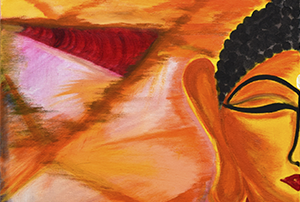
Healing power of artKala Art & Design “The arts are a critical component of healthcare. Expressive art is a tool to explore, develop and practice creativity as a means to wellness.” ~ Wellarts Association ART has the power to heal, offer hope. ART enhances individuals, society and the environment. Decades of research have provided more than a sufficient amount of data to prove that arts education impacts everything from overall academic achievement to social and emotional development and so much more. Research has proven the arts develop neural systems that produce a broad from fine motor skills to creativity and improved emotional balance. Every time you engage in a new or complex activity, your brain creates new connections between brain cells. Your brain’s ability to grow connections and change throughout your lifetime is called brain plasticity or neuroplasticity. Creating art stimulates communication between various parts of the brain. And this is the mere reason why art is important in our daily lives. Art and design process makes life worthwhile. It may not be vital to fulfill our basic needs; it does make life joyful.

